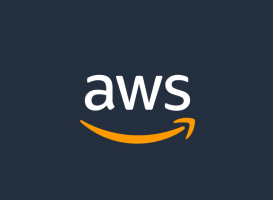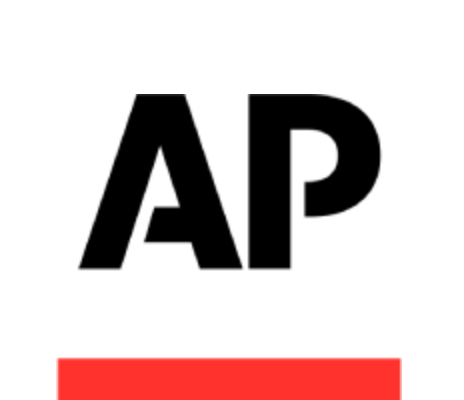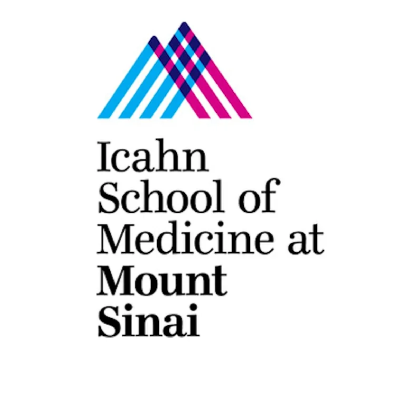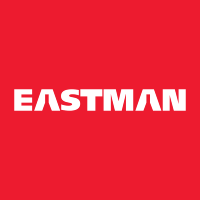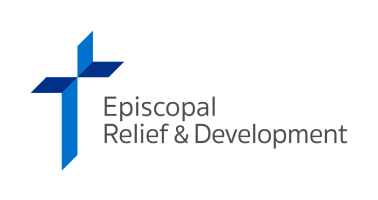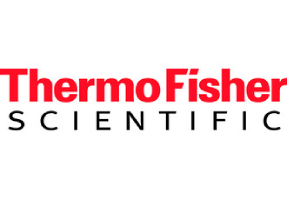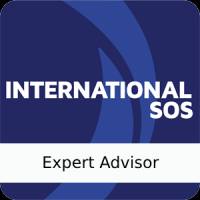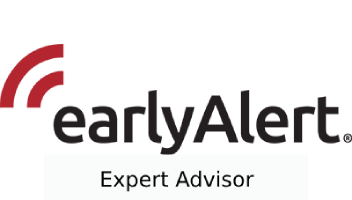About Us
Key Business Challenges We Address
Our clients typically reach out when they need help overcoming:
Inadequate Investment
Your organization is spending limited resources on protecting business activities and resources that don't contribute to its most Critical Business Services.
Poor Measurement
Does measuring the creation and approval of documents really indicate a strong level of resilience? You know the answer...
Limited Engagement
You've experienced declining executive participation and others that you've counted on to contribute in the past are often no-shows.
Asking Too Much
Long data gathering meetings, hours filling in a template, rinse and repeat. Even worse, the results aren't contributing to results.
Misplaced Confidence
Management thinks they're ready for disruption because there's a business continuity manager, you did a BIA, plans are documented.
Insufficient Scoping
Every box on the org chart has a plan and all plans are equally important. Not so much...
These are the reasons why change is needed (and it's the reason for Unified Resilience).
Our Story
Unified Resilience isn't theory. It came from watching good people struggle with methodology that didn't deliver results.
Traditional business continuity practices are often slow and reactive, delivering results that fail to resonate with, or create meaningful measurement for leadership. Introducing documentation rather than capability, traditional methodology asks too much from teams already stretched thin.
While leading global programs at Symantec, Netflix, and AWS, Scott envisioned a different path: measure resilience the same way we measure other forms of risk — through controls. That shift changed everything.
What started as a radical experiment became the Unified Resilience Framework — a practical, risk-based model built around criticality, capability, and real-time gap identification.
The framework is great, but the magic happens with automation. We created, and then spent the last three years fine-tuning, software to create radical efficiency.
Leadership Team
Meet the leaders driving innovation in resilience management.

Scott Baldwin
Founder and CEO
Scott Baldwin is the creator of the Unified Resilience Framework (URF) and a global leader in operational resilience. With over 20 years of experience shaping resilience strategies at Netflix, Amazon Web Services, and eBay, Scott has helped organizations protect their most critical services while navigating disruption, regulatory pressures, and rapid change. At Unified Resilience, he's redefining how companies measure, manage, and communicate resilience—turning complexity into clarity and giving leadership the confidence to act when it matters most.

Brian Zawada
Co-Founder & Chief Strategy Officer
Brian Zawada is a recognized leader in operational resilience with over 25 years of experience helping organizations build practical, sustainable strategies. As co-founder of Avalution Consulting and a key architect of the Business Continuity Operating System™ (BCOS), he has guided global enterprises through complex risk, regulatory, and continuity challenges. Brian now partners with Unified Resilience to deliver innovative approaches that help organizations gain confidence and control in an unpredictable world.
Our Services
Consistent with the Unified Resilience Framework, our four most requested services are described below. Have something else in mind regarding how the Unified Resilience Framework can add value, contact us so we can collaborate on an approach to add the most value.
Program Assessment and Roadmap Development
We provide independent feedback on how your program aligns to leading practice and the Unified Resilience Framework. Most important, we introduce a recommended roadmap to close gaps over time, and we check in to offer insight on addressing implementation roadblocks.
Unified Resilience Program Design
Ready to elevate program performance to measurable capability? We will create governance approaches and specific actions to transition to a controls-based approach to resilience focused on availability, response and recoverability. Say goodbye to silo'ed risk and paper-based resilience.
Program Scoping and Criticality Definition
Take the first step to radical efficiency by scoping in the same way that your leadership team measures its performance. We will prepare for and then facilitate leadership-engaged workshops to scope your program based on critical business services (aka products/services) and then help your organization "de-mystify" the word critical to appropriately scope your program.
Exercise Design and Facilitation
Based on threats, exposures and skill development needs, we will scope, prepare, facilitate and summarize the outcomes from response and/or recovery exercises. We will deliver realistic learning experiences for participants and introduce actionable recommendations to improve resilience.
Not Sure Where to Start?
The first step in URF is identifying your Critical Business Services. And that's where most teams stumble.
Join us for a focused, no-obligation workshop where we'll help you map your organization's core business value. It's not a pitch. It's a reset.
Book the CBS WorkshopThe Unified Resilience Framework
The Unified Resilience Framework (URF) is a control-based model for measuring and managing resilience risk in real time.
It replaces outdated recovery planning with a structured, risk-aligned approach that helps organizations pinpoint gaps,
prioritize investment, and protect what matters most.
Step 1: Risk Integration
• Work with Corporate Risk & Leadership to get single source of truth
• Identify the organization's Critical Business Services
• Perform Strategic BIA on these 'crown jewels'
Step 2: Functional Mapping & Risk Inheritance
• Identify the critical dependencies
• Measure their operational impacts
• Inherit the Criticality Score from the Critical Business Services
Step 3: Asset Capability Assessments
• Using asset-specific controls, measure each critical asset’s existing resilience capabilities
• Quantify this in the Capability Score
Step 4: Resilience Risk Scoring
• The gap between Criticality and Capability is the Resilience Risk Score
• This risk rolls up to the CBS level, creating a clear, visual view of resilience across the business
Step 5: Reporting & Mitigation
• Where Resilience Risk exists, create targeted, actionable mitigation plans
• Track and report risk reduction over time — see the ROI of your program as resilience improves
REQUEST THE WHITEPAPER
See for yourself how the URF can help add value to your program.
Organizations We've Supported
FAQ
Frequently asked questions about the Unified Resilience Framework
We recognize that resilience now encompasses more than just an organization's capacity to react to a disruption - it's more important to invest in preventing disruption. To clarify this concept, we have delineated it into three key domains:
Availability refers to an organization's capacity to prevent business disruptions without requiring extraordinary measures. An example of this is redundant assets.
Responsiveness is the ability to avert business disruptions or maintain performance above minimum standards through leadership response, crisis communications and the implementation of extraordinary measures. Transitioning operations to a secondary location exemplifies this domain.
Recoverability pertains to an organization's capability to restore normal operations within an established acceptable timeframe following a disruption. Leveraging substitute resources or alternate methods of performing work - a.k.a. recovery strategies - are typical examples within this area.
The Unified Resilience Framework (URF) delivers exceptional value through a more efficient and comprehensive approach to business continuity and operational resilience. Our assertion of "10x the value at half the cost" is substantiated by quantifiable metrics and operational efficiency:
Value Amplification:
- Traditional continuity and resilience programs typically generate three primary deliverables: Business Impact Analysis (BIA), plans and Validations
- The URF provides detailed assessments across 30 distinct resilience capabilities, offering a tenfold increase in measurable insights
- This enhanced granularity enables organizations to make more informed decisions about their resilience posture
- Comprehensive capability mapping reveals hidden vulnerabilities and optimization opportunities
Cost Efficiency:
Automated assessment processes reduce manual effort by up to 70% compared to traditional methodologies
- The Pulse software application, built on cutting-edge artificial intelligence capabilities and addressing Availability, Responsiveness and Recoverability,. eliminates the need for multiple specialized tools and third-parties
- Streamlined documentation and reporting processes, together with generative Al and workflows, cut administrative overhead significantly
- Real-time monitoring and notification capabilities reduce the frequency and cost of manual assessments
The Unified Resilience Framework employs a comprehensive three-tiered scoring system to evaluate the resilience capability of an organizational assets:
1. Criticality Score (0-10)
Measures the required level of resilience for an asset, establishing the baseline for optimal protection. This score represents the target resilience threshold based on the asset's importance to business operations, specifically its Critical Business Services.
2. Capability Score (0-10)
Evaluates the current resilience capabilities of an asset across all relevant domains = Availability, Responsiveness and Recoverability. This score reflects the actual level of protection and preparedness currently in place.
3. Resilience Risk Score (0-10)
Calculated as the difference between the Criticality and Capability scores, this metric quantifies the specific risk exposure. A higher score indicates greater vulnerability and the need for immediate attention.
The Resilience Risk Score serves as a pivotal continuity and resilience metric, offering two fundamental advantages over "traditional" key performance indicators:
1. Transparent Risk Visualization
The score provides an immediately actionable metric that resonates across all organizational levels:
- Enables resilience professionals to identify critical vulnerabilities to disruption
- Allows executives to make informed strategic investment decisions, this supporting budget allocation and resource prioritization decision-making
- Facilitates clear communication with stakeholders and board members regarding preparedness
2. Comparative Analysis and Benchmarking
The standardized scoring system enables:
- Direct comparison between different assets across business units and Critical Business Services
- Industry benchmarking and best practice identification
- Progress tracking over time
- Objective measurement of improvement initiatives
Understanding the Criticality Score Beyond RTO
While Recovery Time Objective (RTO) is one component of preparing effectively for disruption, the Criticality Score represents a more comprehensive evaluation framework. This distinction is crucial for understanding organizational resilience:
The Criticality Score encompasses:
- Recovery Requirements: Including but not limited to traditional RTO metrics
- Response Capabilities: Measures for immediate incident handling and crisis management
- Impact Assessment: Financial, operational, and reputational consequences (as well as other factors important to the organization)
- Dependencies: Internal and external relationships that affect business continuity and operational resilience
While Recovery Time Objective (RTO) is a valuable metric for many scenarios, it presents significant limitations when dealing with zero-tolerance disruption scenarios. There are two critical challenges with RTO 0:
1. The RTO Zero Ceiling Effect
This phenomenon creates a critical blind spot in impact assessment:
- Multiple assets may qualify as "RTO 0" despite vastly different business impacts
- For example, two systems with immediate recovery requirements may have dramatically different financial implications - one causing 5x the impact of the other
- This ceiling effect prevents proper prioritization and resource allocation
2. Limited Scope of Measurement
RTO focuses primarily on recovery time but doesn't account for:
- Prevention capabilities and availability measures
- Response effectiveness and crisis management
- Comprehensive business impact beyond operational downtime
The URF takes a strategic approach to impact assessment that balances thoroughness with efficiency:
Top-Level Assessment
When scoping and assessing impact, the Unified Resilience Framework focuss on Critical Business Services (CBS) rather than individual functions and assets. This approach:
- Reduces assessment complexity while maintaining accuracy
- Aligns with how business leaders actually think about their operations
- Provides more actionable insights for strategic decision-making
Integrated Impact Analysis
The URF incorporates impact assessment as part of the broader resilience evaluation:
- Operational impact evaluation considered as part of the Criticality Score
- Financial impact analysis considered as part of capability assessment and Capability Score
- Stakeholder impact consideration as part of the Resilience Risk Score
Yes, but the URF takes a more comprehensive approach to creating effective plans when compared to traditional approaches and documentation:
Capability-Based Recovery Planning
Rather than creating static recovery plans (which are often important to capture and emorialize instructions and difficult-to-remember information), the URF focuses on building and measuring recovery capabilities:
- Identifies specific gaps in recovery capabilities through the Resilience Risk Score
- Provides targeted recommendations for capability improvement
- Measures the effectiveness of recovery measures through ongoing assessment
Dynamic Recovery Strategies
The framework enables organizations to:
- Develop flexible recovery strategies based on actual capability assessments
- Prioritize recovery investments based on criticality and current capability gaps
- Continuously improve recovery capabilities through measurement and feedback
The URF is designed to complement and enhance leading practice, including but not limited to compliance requirements, rather than replace them:
Compliance Integration
The framework highlights to the need to perform, and or create content when required:
- Automated BIA reports based on Critical Business Service assessments
- Response and recovery plan documentation derived from capability assessments
- Compliance reporting that meets regulatory requirements
Enhanced Compliance Value
Beyond meeting basic requirements, the URF provides:
- More accurate and up-to-date control-based assessments through continuous monitoring
- Quantifiable metrics that demonstrate program effectiveness
- Evidence-based decision making for investment purposes
Contact Us
Unified Resilience has pioneered – and continues to evolve – a new approach that goes beyond traditional approaches to protect critical business services in unexpected, powerful ways. All the while delivering measurable results.
Ready to optimize your resilience approach and outcomes – or maybe you just want to learn more? We'd love to hear from you.
Get In Touch
Phone
+1.408.645.0123


